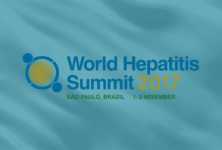HIV-1 associated nephropathy (HIVAN) is a kidney condition that can arise in HIV-positive patients of African ancestry who are not treated appropriately with antiretroviral therapy. Despite many years of extensive research, it remains unclear how patients’ kidney epithelial cells, which do not express the major HIV-1 CD4 receptor, become infected. Now, however, a study appearing in an upcoming issue of the Journal of the American Society of Nephrology (JASN) describes a new mechanism to explain how HIV-1 may infect these cells.
A team led by Patricio Ray, MD and Jinliang Li, PhD (Children’s National Health System and The George Washington University Medical School) set out to investigate the mechanisms underlying the infection by HIV-1 of kidney cells — specifically podocytes and renal tubular epithelial cells — cultured from the urine of children with HIVAN. Various treatments and analyses revealed a key player: transmembrane TNF-alpha, the precursor of soluble TNF alpha that is involved in many inflammatory diseases.
“We found that transmembrane TNF-alpha facilitates the low level productive infection of podocytes cultured from HIV-positive children and renal tubular epithelial cells that do not express CD4, a finding that may have wider clinical implications in understanding how children develop HIVAN,” said Dr. Ray. The novel mechanism may also help explain how other CD4-negative epithelial cells, including those within the cervix or placenta, may become infected, thus facilitating the transmission of HIV-1 from mother to fetus. “More studies are needed to confirm this notion, however,” Dr. Ray noted.
Study co-authors include Jharna Das, PhD, Pingtao Tang, PhD, Zhe, Han, PhD, and Jyoti Jaiswal, PhD.
Journal Reference:
- J. Li, J. R. Das, P. Tang, Z. Han, J. K. Jaiswal, P. E. Ray. Transmembrane TNF- Facilitates HIV-1 Infection of Podocytes Cultured from Children with HIV-Associated Nephropathy. Journal of the American Society of Nephrology, 2016; DOI: 10.1681/ASN.2016050564


 ПОИСК ПО САЙТУ
ПОИСК ПО САЙТУ  поиск по ресурсному центру
поиск по ресурсному центру 



